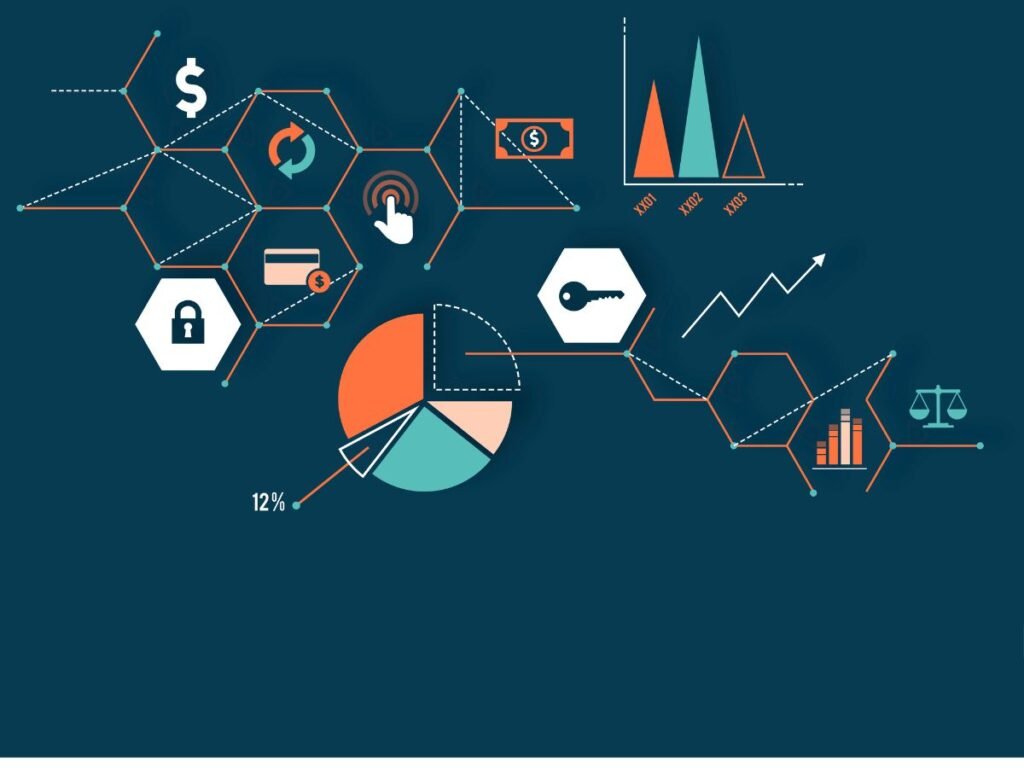What is PPC?
PPC, or Pay-Per-Click, is an online advertising model where advertisers pay a fee each time their ad is clicked. It is a way of buying visits to your website rather than attempting to “earn” those visits organically. PPC advertising is commonly used on search engines, social media platforms, and other websites to drive targeted traffic to a business or brand.
12 Key Strategies for PPC Advertising in 2024
As PPC advertising continues to evolve, it is crucial for advertisers to stay ahead of the game. Here are 12 key strategies to consider for successful PPC advertising in 2024:
1.Embrace Automation: Utilize artificial intelligence and machine learning to automate campaign management and optimize ad performance.
2.Leverage Audience Targeting: Refine your targeting by focusing on specific demographics, interests, and behaviors to reach your ideal audience.
3. Implement Video Advertising: Incorporate video ads into your PPC campaigns to engage users and drive higher conversion rates.
4.Optimize for Voice Search: With the rise of voice assistants, optimize your PPC ads for voice search queries to capture voice-driven traffic.
5.Utilize Ad Extensions: Take advantage of different ad extensions, such as sitelink extensions, call extensions, and structured snippet extensions, to enhance ad performance and provide more information to potential customers.

6.Experiment with Ad Formats: Test different ad formats, such as responsive search ads, image ads, and interactive ads, to find what works best for your target audience.
7.Prioritize Mobile Optimization: With the increasing use of mobile devices, ensure your PPC campaigns are optimized for mobile users to maximize conversions.
8.Focus on Local Advertising: If your business has a physical location, utilize location-based targeting and local ad extensions to drive foot traffic and increase conversions.
9. Implement Remarketing: Target users who have previously interacted with your website or shown interest in your products/services through remarketing campaigns.
10.A/B Test Ad Copy: Continuously test different ad copy variations to identify the most effective messaging that resonates with your target audience.
11.Monitor Competitor Activity: Keep a close eye on your competitors’ PPC strategies and adjust your campaigns accordingly to stay competitive.
12.Track and Analyze Key Metrics: Regularly monitor essential metrics such as click-through rate (CTR), conversion rate, cost per acquisition (CPA), and return on ad spend (ROAS) to evaluate campaign performance and make data-driven optimizations.
Different Ad Extensions in PPC Advertising
Ad extensions are additional pieces of information that can be added to your PPC ads to provide more value to potential customers. Some common ad extensions include:
Sitelink Extensions: Direct users to specific pages on your website.
Call Extensions: Include a phone number in your ad to encourage phone calls.
Structured Snippet Extensions: Highlight specific aspects of your products or services.
Location Extensions: Display your business address and a map with directions.
Callout Extensions: Add additional text to highlight key selling points.
Price Extensions: Showcase pricing information for specific products or services.
These ad extensions enhance ad performance by providing more relevant information to users, increasing visibility, and improving click-through rates.

The Role of A/B Testing and Optimization in the Success of PPC Campaigns
Pay-per-click (PPC) advertising has become an integral part of many businesses’ marketing strategies. It allows advertisers to reach their target audience effectively and measure the success of their campaigns. However, simply running PPC ads is not enough to guarantee success.
In order to maximize the return on investment (ROI) from PPC campaigns, it is essential to employ A/B testing and optimization techniques. These practices can significantly contribute to the success of PPC campaigns by improving ad performance and driving better results.
What is A/B Testing?
A/B testing, also known as split testing, is a method of comparing two versions of a webpage or advertisement to determine which one performs better. In the context of PPC campaigns, A/B testing involves creating two or more variations of an ad and running them simultaneously to see which one generates the desired outcome. This could include variations in ad copy, headlines, images, calls-to-action, or landing page designs.

The purpose of A/B testing is to identify the elements that have the most significant impact on the campaign’s performance. By testing different variations, advertisers can understand what resonates best with their target audience and make data-driven decisions to optimize their campaigns.
The Benefits of A/B Testing in PPC Campaigns
A/B testing offers several benefits when it comes to PPC campaigns:
1. Improved Ad Performance:
By testing different ad variations, advertisers can identify the elements that drive higher click-through rates (CTR) and conversions. This allows them to fine-tune their ads to maximize their effectiveness and improve overall campaign performance.
2. Enhanced User Experience:
A/B testing helps advertisers understand the preferences and behaviors of their target audience. By analyzing user interactions with different ad variations, advertisers can optimize the user experience, leading to higher engagement and better campaign results.
3. Cost Optimization:
Through A/B testing, advertisers can identify the most cost-effective ad variations. By focusing on the elements that generate the best results, advertisers can allocate their budget more efficiently and reduce wasted ad spend.
4. Continuous Improvement:
A/B testing is an ongoing process that allows advertisers to continually refine their PPC campaigns. By regularly testing and optimizing different elements, advertisers can stay ahead of the competition and adapt to changing market dynamics.
Elements to Test in PPC Campaigns
When it comes to A/B testing in PPC campaigns, there are several key elements that advertisers can experiment with:
1. Ad Copy and Headlines:
The ad copy and headlines play a crucial role in capturing the attention of potential customers. Testing different messaging, tone, and value propositions can help identify the most compelling ad copy that resonates with the target audience.
2. Call-to-Action (CTA):
The CTA is a vital component of any PPC ad. Testing different CTAs, such as “Buy Now,” “Learn More,” or “Sign Up,” can help determine which one generates the highest conversion rates.
3. Images and Visuals:
The use of visuals in PPC ads can significantly impact their performance. Testing different images, graphics, or videos can help identify the most engaging visual elements that drive higher click-through rates.
4. Landing Page Design:
The design and layout of the landing page can greatly influence the conversion rate. By testing different landing page designs, advertisers can optimize the user experience and improve the chances of converting visitors into customers.

5. Targeting and Audience Segmentation:
A/B testing can also be used to test different audience segments and targeting options. By experimenting with different demographics, interests, or locations, advertisers can identify the most responsive audience segments and optimize their targeting strategies.
In conclusion, A/B testing and optimization are essential for the success of PPC campaigns. By continuously testing different elements and making data-driven decisions, advertisers can improve ad performance, enhance user experience, optimize costs, and achieve better campaign results.
Another key point is Implementing A/B testing techniques and focusing on optimization will enable businesses to maximize their ROI from PPC advertising.
Common Bidding Strategies in PPC Advertising
Advertisers use various bidding strategies to determine how much they are willing to pay for each click on their ads. Some common bidding strategies include:
Manual CPC Bidding: Set bids manually for more control over individual keywords or ad groups.
Automated Bidding: Let machine learning algorithms adjust bids based on performance data and campaign goals.
Target CPA Bidding: Set a target cost per acquisition and let the system optimize bids to achieve that goal.
Enhanced CPC Bidding: Allow the system to adjust bids based on the likelihood of conversion.
Maximize Conversions Bidding: Optimize bids to maximize the number of conversions within a given budget.
Advertisers determine their bid amounts based on factors such as their budget, campaign goals, and the competitiveness of keywords in their industry.
Essential Metrics to Track in a PPC Campaign
Tracking key metrics is crucial for evaluating the performance of a PPC campaign. Some essential metrics to track include:
Click-Through Rate (CTR): Measures the percentage of users who click on your ad after seeing it.
Conversion Rate: Measures the percentage of users who take the desired action, such as making a purchase or filling out a form.
Cost per Acquisition (CPA): Calculates the average cost of acquiring a customer through PPC advertising.
Return on Ad Spend (ROAS): Measures the revenue generated for every dollar spent on PPC advertising.
Quality Score: Assesses the relevance and quality of your ads, keywords, and landing pages.
These metrics provide insights into the effectiveness of your PPC campaigns and help guide optimization efforts.
In conclusion, staying up-to-date with the latest strategies, leveraging ad extensions, using effective bidding strategies, and tracking essential metrics are key components of successful PPC advertising in 2024.Another key point is by implementing these strategies and continuously optimizing campaigns, advertisers can drive targeted traffic, increase conversions, and achieve their advertising goals.
The Broadvisers: Broadening Your Financial Horizons
The Broadvisers Broadening Your Financial Horizons with Broadvisers Welcome to Broadvisers, your trusted partner in…
BRICS Currency: A New Global Challenger to the US Dollar
What is BRICS’ Currency? The BRICS currency is a proposed unified medium of exchange for…
Understanding Digital Currencies: The Future of Money
Understanding Digital Currencies: The Future of Money What is digital currency? Digital currency, also known…
Everything You Ever Wanted to Know About Technology
Cursus iaculis etiam in In nullam donec sem sed consequat scelerisque nibh amet, massa egestas…
The Frightening Affect of Climate Change on Government
Cursus iaculis etiam in In nullam donec sem sed consequat scelerisque nibh amet, massa egestas…
The Ultimate Guide to Stock Market
Cursus iaculis etiam in In nullam donec sem sed consequat scelerisque nibh amet, massa egestas…









